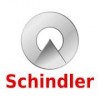Filter interviews by
Normet Service Engineer Interview Questions and Answers
9 Interview questions
Turbocharger increases the air intake in diesel engine to improve performance.
Turbocharger uses exhaust gases to spin a turbine which compresses air intake
Compressed air has more oxygen, allowing more fuel to be burned, increasing power
Turbocharger can increase engine efficiency and reduce emissions
Commonly used in diesel trucks, boats, and heavy machinery
Turbocharger is used in internal combustion engines to increase power output while centrifugal compressor is used in HVAC systems to increase air pressure.
Turbocharger is driven by exhaust gases while centrifugal compressor is driven by an electric motor or a gas turbine.
Turbocharger compresses air before it enters the engine while centrifugal compressor compresses air after it enters the system.
Turbocharger is us...
2 stroke engines have a power stroke in every revolution, while 4 stroke engines have a power stroke in every other revolution.
2 stroke engines have a simpler design and are lighter than 4 stroke engines
2 stroke engines have a higher power-to-weight ratio than 4 stroke engines
4 stroke engines are more fuel efficient and have a longer lifespan than 2 stroke engines
4 stroke engines have a separate lubrication system...
Single acting cylinders have one port for fluid to enter and exit, while double acting cylinders have two ports.
Single acting cylinders use fluid pressure to extend the piston rod and a spring to retract it.
Double acting cylinders use fluid pressure to extend and retract the piston rod.
Single acting cylinders are commonly used in applications where the load is moved in one direction only, such as in dump trucks.
Do...
Compressor in diesel engine compresses air to increase its pressure and temperature.
Compressor draws in air from the atmosphere and compresses it before sending it to the engine.
The compressed air is mixed with fuel in the combustion chamber to create a high-pressure explosion that powers the engine.
The compressor is driven by the engine's crankshaft through a belt or gear system.
The compressor also helps to cool ...
Pressure Relief valve releases excess pressure to prevent damage, while Pressure Reducing valve reduces pressure for downstream use.
Pressure Relief valve opens when pressure exceeds set limit to prevent damage to equipment
Pressure Reducing valve reduces pressure for downstream use, maintaining a constant pressure
Pressure Relief valve is typically used in systems with no downstream pressure requirement
Pressure Redu...
Directional valve controls the direction of fluid flow while pressure reducing valve maintains a constant downstream pressure.
Directional valve is used to control the direction of fluid flow in a hydraulic system.
Pressure reducing valve is used to maintain a constant downstream pressure in a hydraulic system.
Directional valve can be either a spool valve or a poppet valve.
Pressure reducing valve can be either a dir...
Heat exchange in hydraulic machines is used to regulate temperature and prevent overheating.
Heat exchange helps to maintain the temperature of hydraulic fluid within a safe operating range.
It prevents overheating of the hydraulic system, which can cause damage to the components.
Heat exchangers can be air-cooled or liquid-cooled, depending on the application.
Examples of hydraulic machines that use heat exchange inc...
A hydraulic circuit diagram is a schematic representation of a hydraulic system, showing the flow of fluid and the various components involved.
A hydraulic circuit typically consists of a pump, valves, actuators, and fluid lines.
The pump is responsible for generating hydraulic pressure by converting mechanical energy into fluid flow.
Valves control the direction, flow rate, and pressure of the hydraulic fluid.
Actuat...
Normet Service Engineer Interview Experiences
2 interviews found

(2 Questions)
- Q1. Would you like to join our company in same salary and facilities Would yoh like to join as a 3rd party employee
- Ans. It would be better to joj your company for my better professional experience but as i have experience in previous companies i require some hike based on my knowledge and experience
- Q2. Would you like to join our company in same salary and facilities
- Ans. I have experience and knowledge so it would be better that i join with some genuine hike
Interview Preparation Tips
I applied via Walk-in and was interviewed before Jul 2021. There were 2 interview rounds.

(9 Questions)
- Q1. Draw simple Hydraulic circuit diagram and Explain all Hydraulic function.
- Ans.
A hydraulic circuit diagram is a schematic representation of a hydraulic system, showing the flow of fluid and the various components involved.
A hydraulic circuit typically consists of a pump, valves, actuators, and fluid lines.
The pump is responsible for generating hydraulic pressure by converting mechanical energy into fluid flow.
Valves control the direction, flow rate, and pressure of the hydraulic fluid.
Actuators, ...
- Q2. Difference between Single Acting cylinder and Double Acting cylinder?
- Ans.
Single acting cylinders have one port for fluid to enter and exit, while double acting cylinders have two ports.
Single acting cylinders use fluid pressure to extend the piston rod and a spring to retract it.
Double acting cylinders use fluid pressure to extend and retract the piston rod.
Single acting cylinders are commonly used in applications where the load is moved in one direction only, such as in dump trucks.
Double ...
- Q3. Difference between Directional valve and pressure reducing valve?
- Ans.
Directional valve controls the direction of fluid flow while pressure reducing valve maintains a constant downstream pressure.
Directional valve is used to control the direction of fluid flow in a hydraulic system.
Pressure reducing valve is used to maintain a constant downstream pressure in a hydraulic system.
Directional valve can be either a spool valve or a poppet valve.
Pressure reducing valve can be either a direct a...
- Q4. Difference between Pressure Relief valve and Pressure Reducing valve?
- Ans.
Pressure Relief valve releases excess pressure to prevent damage, while Pressure Reducing valve reduces pressure for downstream use.
Pressure Relief valve opens when pressure exceeds set limit to prevent damage to equipment
Pressure Reducing valve reduces pressure for downstream use, maintaining a constant pressure
Pressure Relief valve is typically used in systems with no downstream pressure requirement
Pressure Reducing ...
- Q5. Difference between 2 stroke and 4 stroke
- Ans.
2 stroke engines have a power stroke in every revolution, while 4 stroke engines have a power stroke in every other revolution.
2 stroke engines have a simpler design and are lighter than 4 stroke engines
2 stroke engines have a higher power-to-weight ratio than 4 stroke engines
4 stroke engines are more fuel efficient and have a longer lifespan than 2 stroke engines
4 stroke engines have a separate lubrication system, whi...
- Q6. Difference between Turbocharger and Centrifugal compressor
- Ans.
Turbocharger is used in internal combustion engines to increase power output while centrifugal compressor is used in HVAC systems to increase air pressure.
Turbocharger is driven by exhaust gases while centrifugal compressor is driven by an electric motor or a gas turbine.
Turbocharger compresses air before it enters the engine while centrifugal compressor compresses air after it enters the system.
Turbocharger is used in...
- Q7. How Turbocharger works in Diesel Engine?
- Ans.
Turbocharger increases the air intake in diesel engine to improve performance.
Turbocharger uses exhaust gases to spin a turbine which compresses air intake
Compressed air has more oxygen, allowing more fuel to be burned, increasing power
Turbocharger can increase engine efficiency and reduce emissions
Commonly used in diesel trucks, boats, and heavy machinery
- Q8. How Compressor works in Diesel Engine
- Ans.
Compressor in diesel engine compresses air to increase its pressure and temperature.
Compressor draws in air from the atmosphere and compresses it before sending it to the engine.
The compressed air is mixed with fuel in the combustion chamber to create a high-pressure explosion that powers the engine.
The compressor is driven by the engine's crankshaft through a belt or gear system.
The compressor also helps to cool the e...
- Q9. What is the use of Heat Exchange in Hydraulic machines
- Ans.
Heat exchange in hydraulic machines is used to regulate temperature and prevent overheating.
Heat exchange helps to maintain the temperature of hydraulic fluid within a safe operating range.
It prevents overheating of the hydraulic system, which can cause damage to the components.
Heat exchangers can be air-cooled or liquid-cooled, depending on the application.
Examples of hydraulic machines that use heat exchange include ...
Interview Preparation Tips
Top trending discussions






Interview questions from similar companies

I applied via Naukri.com and was interviewed before May 2020. There was 1 interview round.
Interview Questionnaire
1 Question
- Q1. Write the equation for dynamics and wave spectra equations. I do not remember questions as it is 3 years back.
Interview Preparation Tips

Senior Engineer Interview Questions & Answers
Sigma Electric Manufacturing Corporationposted on 10 May 2018
I applied via Company Website and was interviewed in Jan 2018. There were 2 interview rounds.
Interview Preparation Tips
Experience: technical round
no. of questions 30
Round: Test
Experience: Questions related to NPD
no. of questions 10
Round: Test
Experience: VP Round
all questions reated to job 10
Round: Test
Experience: HR round ..
General Tips: Know the JD before interview
Skills: Communication, Body Language, Decision Making Skills
Duration: 1-4 weeks

Senior Engineer Interview Questions & Answers
Wipro Infrastructure Engineeringposted on 4 Sep 2021
I applied via Recruitment Consultant and was interviewed in Mar 2021. There were 3 interview rounds.
Interview Questionnaire
4 Questions
- Q1. How types of welding?
- Ans.
There are several types of welding including MIG, TIG, Stick, and Flux-Cored welding.
MIG welding uses a wire electrode and a shielding gas to join two pieces of metal together.
TIG welding uses a tungsten electrode and a filler metal to create a strong weld.
Stick welding uses a consumable electrode coated in flux to create a strong bond.
Flux-Cored welding uses a wire electrode with a flux core to create a protective shi...
- Q2. Difference b/w 1st angle & 3rd angle projection?
- Ans.
1st angle projection is used in Europe & 3rd angle projection is used in North America. They differ in placement of views.
1st angle projection places the object in front of the viewing plane while 3rd angle projection places the object behind the viewing plane.
In 1st angle projection, the top view is placed below the front view while in 3rd angle projection, the top view is placed above the front view.
1st angle project...
- Q3. Why u are leaving your past company
- Q4. What is meant by six sigma
- Ans.
Six Sigma is a data-driven methodology used to improve business processes by reducing defects and variability.
Six Sigma aims to achieve a level of quality where the probability of defects is extremely low.
It involves a structured approach to problem-solving using statistical analysis.
The methodology uses a set of tools and techniques such as DMAIC (Define, Measure, Analyze, Improve, Control) and statistical process con...
Interview Preparation Tips


(2 Questions)
- Q1. Based on the experiences and technical information provided in resume
- Q2. Based on the standards mentioned in resume regarding oil and gas
Interview Preparation Tips

I appeared for an interview before Jun 2021.
(2 Questions)
- Q1. Input output list the digital and analog signals from field instruments to control room via the single core and multicore cables via the junction boxes.
- Ans.
Overview of digital and analog signals transmitted from field instruments to control rooms via cables and junction boxes.
Digital signals: Represented as discrete values (0s and 1s), e.g., temperature readings from a digital sensor.
Analog signals: Continuous signals that vary over time, e.g., pressure readings from a pressure transducer.
Single-core cables: Typically used for low-power signals, e.g., a single temperature...
- Q2. What is dca an# plc
- Ans.
DCA and PLC are commonly used acronyms in the field of engineering.
DCA stands for Direct Current Amplifier, which is a device used to amplify direct current signals.
PLC stands for Programmable Logic Controller, which is a digital computer used for automation of electromechanical processes.
DCA and PLC are essential components in various engineering applications such as industrial automation and control systems.
Interview Preparation Tips
Skills evaluated in this interview

I applied via Referral and was interviewed in Nov 2023. There were 3 interview rounds.

(1 Question)
- Q1. What is your highest qualification
- Ans.
My highest qualification is a Master's degree in Electrical Engineering.
Master's degree in Electrical Engineering
Specialized in power systems
Thesis focused on renewable energy integration
Completed advanced courses in control systems
Published research papers in IEEE conferences
(1 Question)
- Q1. What is your role and responsibilities in the project quality?
- Ans.
As a Senior Engineer, my role in project quality is to ensure that all deliverables meet the required standards and specifications.
Developing and implementing quality assurance processes and procedures
Conducting regular audits and inspections to identify any quality issues
Collaborating with cross-functional teams to address and resolve quality concerns
Creating and maintaining quality documentation, including test plans...

I applied via Naukri.com and was interviewed in Sep 2023. There was 1 interview round.
(2 Questions)
- Q1. Basic Geotechnical questions
- Q2. Piling Design, Shallow Foundation Design, International Codes for subsea structure foundation designs.
Interview Preparation Tips

I applied via Naukri.com and was interviewed in Apr 2023. There were 3 interview rounds.

(1 Question)
- Q1. Most interview question based on resume only. And related oil and gas industry.
(1 Question)
- Q1. Salary discussion
Interview Preparation Tips
- API 6A
- Subsea
- Pressure Handling
Normet Interview FAQs
Tell us how to improve this page.
Normet Interviews By Designations
- Normet Service Engineer Interview Questions
- Normet Assistant Sales Manager Interview Questions
- Normet Deputy Manager HR Interview Questions
- Normet Safety Officer Interview Questions
- Normet Assistant Manager Interview Questions
- Normet Design Engineer Interview Questions
- Normet Warehouse Executive Interview Questions
- Normet Assistant Manager Quality Assurance Interview Questions
- Show more
Interview Questions for Popular Designations
- Senior Engineer Interview Questions
- Project Engineer Interview Questions
- Junior Engineer Interview Questions
- Electrical Engineer Interview Questions
- Engineer Interview Questions
- Site Engineer Interview Questions
- Mechanical Engineer Interview Questions
- Executive Engineer Interview Questions
- Show more
Overall Interview Experience Rating
based on 2 interview experiences
Service Engineer Interview Questions from Similar Companies
Normet Service Engineer Reviews and Ratings
based on 44 reviews
Rating in categories
|
Service Engineer
193
salaries
| ₹3.5 L/yr - ₹8 L/yr |
|
Senior Service Engineer
51
salaries
| ₹4.4 L/yr - ₹10.6 L/yr |
|
Assistant Manager
34
salaries
| ₹7.7 L/yr - ₹13.3 L/yr |
|
Shift Incharge
25
salaries
| ₹5.3 L/yr - ₹8 L/yr |
|
Technician
19
salaries
| ₹2.9 L/yr - ₹8.6 L/yr |

Sigma Electric Manufacturing Corporation

TÜV SÜD

TKIL

Ceasefire Industries
- Home >
- Interviews >
- Normet Interview Questions

















